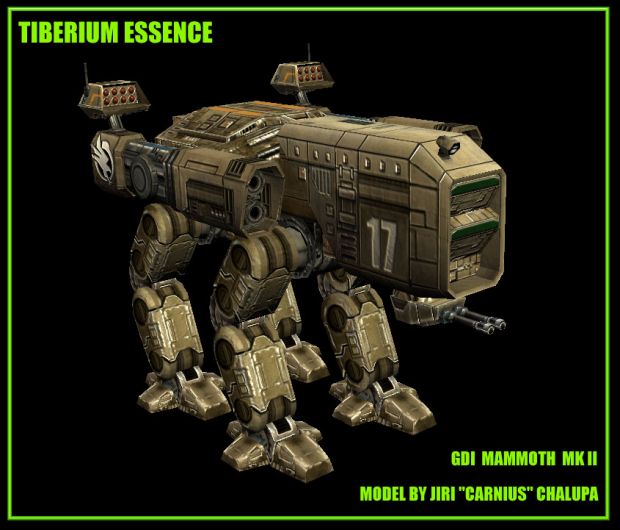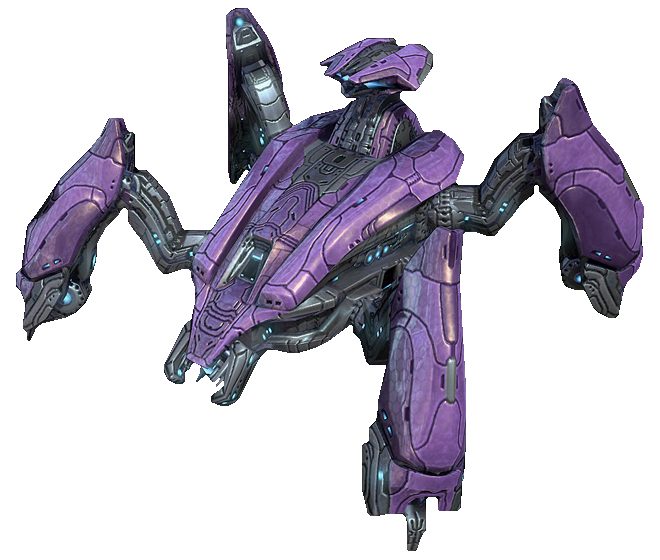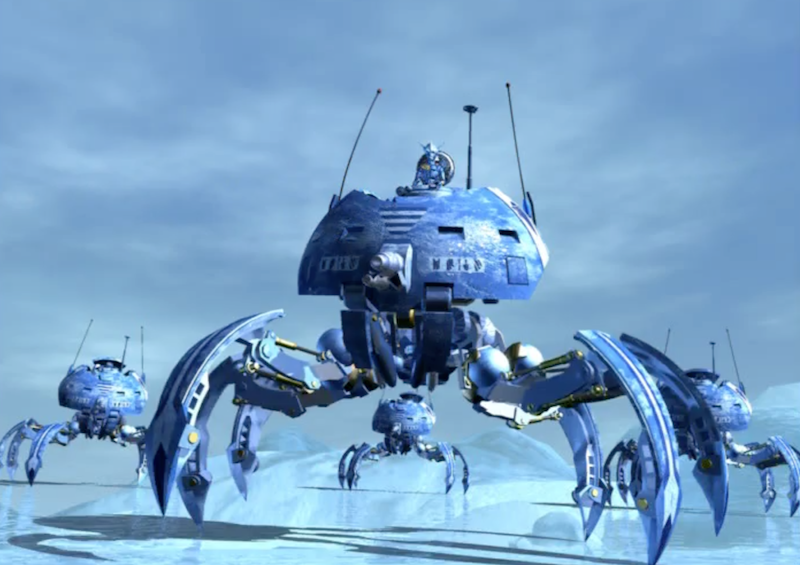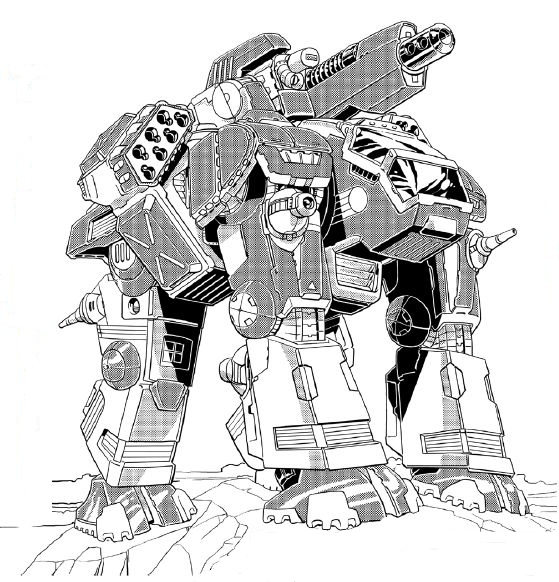Many consider them an abomination. Others thing they're just spidertanks on stilts. For many, this is the great question of our time.
Discuss...

Discuss...


Uhh... no it's not? Sure Quads can carry less weapons than a comparable biped mech, but they actually have quite a few advantages that arguably make up for that drawback, plus they can carry more armor than a similar weight biped. There's quite a few environments where Quads are superior to Bipeds in BattleTech, if people actually remember to use the full Quadmech ruleset.Battletech is not quad-friendly, because of the mech design rules).
I'll grant, if they do ignore the special case rules for Quads, then yeah, they're probably worse


I wasn't aware there were special rules for quads - whichever mech builder programs I've used apparently don't use them. Also, the part of carrying more armor IS a disadvantage - 75% armor for four legs weighs more than 75% armor for two legs and two arms, which means less tonnage for other things, not only weapons.
This covers most of the special combat rules, but Bear Ribs doesn't actually explain just how much of a bonus Quads get for certain things.Quads have a few special rules. They get a small bonus to pilot rolls which is nice. The can mule kick an enemy directly in their rear and can "crabwalk" sideways into hexes so they're generally move mobile than bipeds, and the bonus to pilot means they can jump with more stability. They can stand up more easily when they've fallen than bipeds. They interact oddly with the cover rules, since hits to the legs are "misses" if you're behind partial cover, a quad behind partial cover has far more misses since all arm hits on it are actually leg hits so while partial cover protects a biped from maybe a quarter of hits, it soaks half the hits a quad would take. They also take less of a penalty to losing a leg, a biped is pretty much out of the fight barring a lucking roll if it has a leg blown off but a quad can keep going.
The problem with quads in BattleTech is twofold. Since they have no arms and no ability to torso twist, they have great huge swaths of area at their sides they can't fire into no matter what and that makes them extremely vulnerable to flanking. IF they don't have rear-facing legs they have to rotate around completely to attack an enemy that gets behind them and blow all their movement points on turning (unless said enemy is dumb enough to get into mule-kick position). They are also missing a lot of their criticals, a leg only has two empty slots while an arm has 8-10 so there's simply a lot less space to put stuff, they run out of criticals rather fast once out of level 1 tech, blowing 14 slots on endo-steel or ferro-fibrous is a no brainer for a lot of 'mechs but doing it when you're already 16 criticals down makes it more painful.
There's experimental rules allowing quads to mount a tank turret at the cost of a critical which mitigates the first problem but almost no canon units use it (the Araña does but it's an industrial 'mech from an incredibly niche faction that will almost never see play).
Quads seem like they have a lot of problems. Quadrupeds bounce a lot when they walk, so that kind of motion would not be ideal for a manned craft, and quadrupeds are actually white easy to trip, flip and disable (dog wrestling talking). I'd probably just go for a full spider-bot instead.

Well, yes, that's why I referenced the Tachikoma as a good counter example.Hey, look. It's a giant quad mech that laughs at your feeble attempts to trip it.



I see two assumptions that don't hold up. I don't think that a quad-mech's legs will be as complicated as a biped's for the simple fact that they don't have to do the fine balancing act of a bipod. A quadruped is inherently stable, even when walking. That's why we build tables with three or four legs. But a biped needs broad, articulated feet to do constant balance corrections, and the relative size of those feet is only going to increase as the weight increases.The most obvious of course is, well, more legs. But each leg still probably needs to be about as complicated with two as with 4.
So, if each leg needs to be about as complicated, that suggests each leg may be about as expensive. So, assuming the legs are a major share of the expense, a 4 legged mech is going to be about as expensive as 2 2 legged mech. And generally, two mechs seem like they would represent more firepower on the battlefield than 1 4 legged mech.
The legs on a person are only about 1/3rd of the mass of the individuals, a lot of that is because they have to carry more weight on their limited frames though. Since the weight of the torso would be the same, each leg on a quad (or more) mech could be considerably thinner across the board. So while quad mechs would still be a bit more expensive in terms of materials costs, it's no where near 200%, probably closer to 125%.So, if each leg needs to be about as complicated, that suggests each leg may be about as expensive. So, assuming the legs are a major share of the expense, a 4 legged mech is going to be about as expensive as 2 2 legged mech. And generally, two mechs seem like they would represent more firepower on the battlefield than 1 4 legged mech.
Bipedalism is rare for a reason, it is horrifically difficult to do consistently. Every moment you are standing and walking your whole body has to go through dozens of rebalancing micro-corrections. As an example, try standing perfectly still and see how you start to sway after a bit without your body's normal corrective actions taking place. This would be the real reason why most mech designs are unrealistic.So 4 legged seems like its sacrificing the mobility, compactness and relative simplicity of 2 legs
But how much advantage does it actually give over using a little tracked vehicle?
Second, the idea that you can field two biped's for the price of one, because biped's have half of the legs. This assumes that the bipeds won't have arms, and it assumes that the mechs won't have expensive radar, ECM, or other systems that are comparatively expensive.
The legs on a person are only about 1/3rd of the mass of the individuals, a lot of that is because they have to carry more weight on their limited frames though. Since the weight of the torso would be the same, each leg on a quad (or more) mech could be considerably thinner across the board. So while quad mechs would still be a bit more expensive in terms of materials costs, it's no where near 200%, probably closer to 125%.
Bipedalism is rare for a reason, it is horrifically difficult to do consistently. Every moment you are standing and walking your whole body has to go through dozens of rebalancing micro-corrections. As an example, try standing perfectly still and see how you start to sway after a bit without your body's normal corrective actions taking place. This would be the real reason why most mech designs are unrealistic.
The OG, GOL-1H Goliath:

Not so much.


